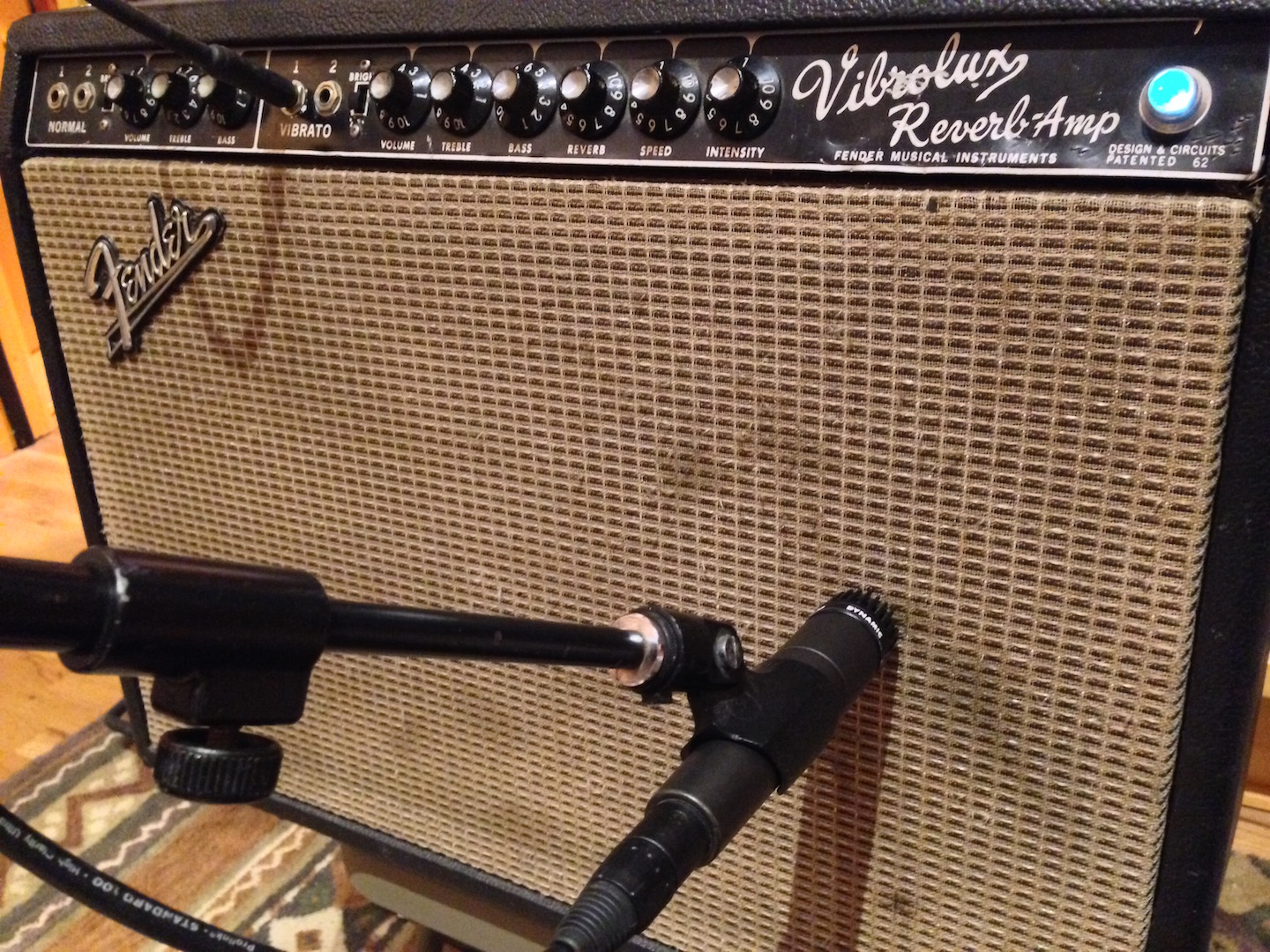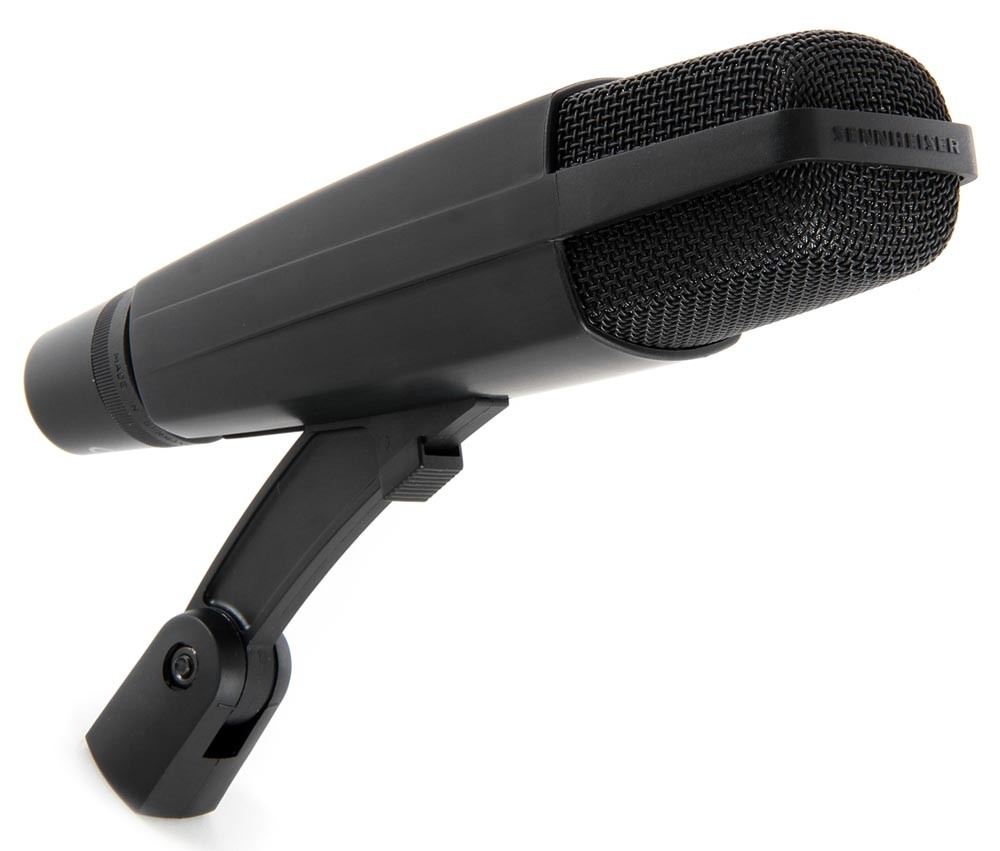
Shure SM57
Dynamic Cardioid Microphone
Buy from Guitar Center $99 Buy from Amazon $99 Buy from Sam Ash $99We receive a small kickback from our partners when you click through and purchase the great gear we recommend. Details
Best Microphone For Recording Electric Guitar
Shure SM57
- Don Makoviney
- Last Updated: August 31, 2020
The best microphone for recording electric guitar may be one you have already: the Shure SM57. Many of the greatest guitar parts of all time were recorded with a SM57 up against an amp. It works in various configurations, blended with other mics, and is extremely durable. If you need a great mic for electric guitar, which also performs other studio studio tasks equally well, the Shure SM57 is the one to get.
There’s not a lot to say about the Shure SM57 in the world of music gear that hasn’t already been said.
It just works, and has worked for decades on some of the biggest songs ever.
It just sounds great miked up to a guitar cabinet. Play with different positions in relation to the speaker cone, watch YouTube videos or ask a mentor for various positions that could get you the sound you want.
Other Options
The Sennheiser MD421 II is also a universally well-regarded microphone and has a wide range of uses in the studio.
We didn’t make this our main pick because (1) it is considerably more expensive, and (2) the extra expense doesn’t match with the perceived benefits over the SM57.
Yes, it has a slightly better frequency response. If you are fighting harsh or brittle tones, this mic may give you the help you need. Expert reviewers have noted that the high end of the mic seems to be smoother, and the low end sounds a bit more well-rounded.
Still, we love this mic at MSCGR. It will be one to add to our recording options in the near future.
The Specialized Option
The Shure SM57 and Sennheiser MD421 II are very versatile mics and can be used in many other functions besides just electric guitar. But the Sennheiser Evolution E609 is built for the sole purpose of miking electric guitar amps. In fact, the flat front of the mic means you can just drape it directly over the amp using the cable itself. (See below.) This means one less mic stand to worry about. It also sounds great!
We didn’t make this our main pick because, while it is the same $99 low(-ish) price as a SM57, it is far less useful in other miking situations. For the same money you can get excellent results with the 57, and continue to use the 57 for other things like drums, horns, strings, and even vocals.

(pic source)
If you’ve already tried the SM57 and MD421 but still can’t find the right sound, give the Sennheiser Evolution E609 a try.
Conclusion
All three of these microphones will give you killer electric guitar tone. Our main pick will be the best for most people. Plus, you can use it for drums, vocals and more. But in the event you have some special sound needs, either of the other two will take care of those problems with minimal effort.
Happy recording!
Tell Me If There's A Deal For This
Best Microphone For Recording Electric Guitar
Shure SM57

Important Specs
| Freq Response | 20Hz to 20kHz |
| Max SPL | 149 dB |
| Dimensions | L x W x (D): 6.375 x 1.25" |
| Pattern | Cardioid |
| Capsule | Dynamic |
| more specs |
Synopsis:
The best microphone for recording electric guitar may be one you have already: the Shure SM57. Many of the greatest guitar parts of all time were recorded with a SM57 up against an amp. It works in various configurations, blended with other mics, and is extremely durable. If you need a great mic for electric guitar, which also performs other studio studio tasks equally well, the Shure SM57 is the one to get.

The Step Up
Sennheiser MD421 II
This mic is universally regarded near-equal to Shure's SM57. The MD421 has a wider frequency response and adds a little more color to the sound thanks to it's larger diaphragm. If (for some reason) you are looking for something other than the SM57, get this. It also performs well with other instruments like percussion and vocals.

Less Flexible Option
Sennheiser Evolution E609 Silver Microphone
The Shure SM57 and Sennheiser MD421 II are very versatile mics and can be used in many other functions besides just electric guitar. However, the Evolution E609 is built for the sole purpose of micing electric guitar amps. In fact, the flat front of the mic means you can just hang the mic from the cable itself directly over the amp. This means one less mic stand to worry about. It also sounds great! If you've already tried the SM57 and MD421 but still can't find the right sound, give the Sennheiser Evolution E609 a try.
Sources
-
Jon Bare, Recording Magazine, 20170515
Miking the Electric Guitar“As for mic placement, I would like to put forward a radical idea: always start with a Shure SM57 close up on the grille cloth and angled slightly away from the center of the cone. Why? The Shure SM57 usually sounds pretty good on guitar amps. It can take a lot of level without distorting, and it’s cheap. It makes a great jumping-off point for further creative possibilities with microphones.”
-
Mike Senior, Sound on Sound, 20070801
Guitar Amp Recording: Pro Techniques Put To The Test“When it comes to recording electric guitar, Jay Graydon's views on mic choice are pretty clear: "I have tried so many dynamic mics over the years, and always come back to the Shure SM57." He's not alone: this robust, cardioid, dynamic microphone is more often mentioned in relation to electric-guitar recording than any other. Why such a strong preference? These days, force of habit has got to be part of the answer, but there is also a lot about the microphone's frequency response which suits guitar recording. For a start, the sub-200Hz response roll-off reduces low-end cabinet 'thumps', which might otherwise conflict with the kick drum and bass in the mix. This also compensates for proximity boost when the mic is used very close to the speaker cone. However, there's also a slight 'suckout' at 300-500Hz, an area where muddiness can easily occur, and a broad 2-12kHz presence peak, which adds bite and helps the guitars cut through the rest of the track.”
-
eds1275, Guitar.com, 20170516
Mic Review: Sennheiser e609 Silver“Now onto the sound: This mic is rounder in the bottom end and smoother on the top than a 57. Is that good? Yes! Is it better? Totally subjective. If you find your sound a little shrill through a 57 then give it a try. If you record a bunch and are looking for a quality inexpensive addition to your mic locker, try it. I found the extra roundness was a welcome addition for clean guitar, I actually prefered it over a 57. When I did some heavy palm muting in drop-d the roundness of the bottom end was a little bigger sounding than the 57 but not as tight - however the level stayed much closer to the un-muted parts, whereas the 57 jumped up in volume substantially. Another noticeable feature of the e609 when compared to the SM57 is the noise. A 57 has more "bite" to it, and I think that presence boost is one reason that the 57 picks up a lot of amp hiss. The e609 however is really quiet. It has plenty of top end but just doesn't seem to get a lot of amp hiss. As a result I had less to edit on a rock track I wrote that has lots of stops in it. I double-tracked one guitar with the 57 and the other [double tracked, same amp - same guitar - same settings] with the 609. I ended up gating the SM57, but there was no need with the 609. Were I still a gigging musician I would get one of these for live use. The ability to hang it by the cord from the guitar amp and have the capsule pointed in the right direction is worth the ten dollars extra this mic is over a 57. That's one less mic stand to carry to a gig! I have seen people do that with a 57 but the tone was really lacking.”
Important Specs
| Freq Response | 20Hz to 20kHz |
| Max SPL | 149 dB |
| Dimensions | L x W x (D): 6.375 x 1.25" |
| Pattern | Cardioid |
| Capsule | Dynamic |
| more specs |
Follow MSCGR
Talk To Us
Did we miss a recommendation? Is there something you'd like to see us review? Typos? Mistakes? If so, drop us a line.
